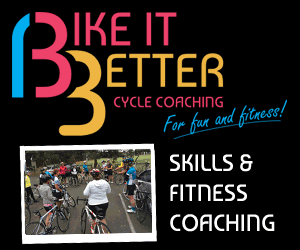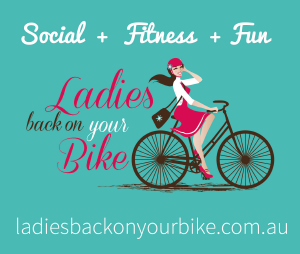Want to enjoy a guilt-free morning treat while smugly lording it over your fellow workmates? Stephen Corneille reveals the rich rewards of riding to work.
My decision to start riding to work was a gradual thing. Having decided it was a good idea, it took me another couple of years to actually take the plunge. My problem was that I was just too good at thinking up reasons not to. I did come up with solutions for all of the excuses eventually, but in retrospect I should have just stopped analysing and started riding. If you take nothing away from this article except that advice, then you’ll be well on your way. For the over-analysers: keep reading.
The first thing to understand is why you want to ride. If you can come up with enough benefits to outweigh the disadvantages then you should be able to convince yourself that the only sensible thing for you to do is saddle up, and that any means of travelling to work (except walking) that doesn’t involve bike riding is economically and socially unsound. Here are the justifications I used to convince myself:
- Fitness – this one’s pretty much a given. I thought I was fit from playing tennis, but I have no doubt that I’m much fitter now than I’ve been for 20 years.
- Money saved – I was driving to the railway station and then catching a train. That train trip alone was costing me $50 a week; that’s nearly $2,500 a year!
- Mental health – I’m sure you know people who drag themselves into work in the mornings, look half asleep and aren’t safe to talk to until they’ve had a coffee. I bet they don’t ride to work. When you ride your brain is constantly processing information and making decisions at an enormous rate. Added to that, you’re sucking in huge quantities of fresh air and burning calories. After a start like that, you’re all revved up and ready to go as soon as you fire up the monitor. You have more energy and work seems easier.
- Being holier than thou – this is linked to mental health. Riding your bike is good for the environment. If you’re like me, you’ll take endless enjoyment in constantly reminding everyone you work with that you’re a better person than them because you ride a bike. There’s plenty of ways to slip it into the conversation; and I usually do!
- Apocryphal benefits – there are a few anticipated benefits that haven’t materialised. I’ve discussed this with other regular riders and they shared the same experience. The one everyone cited was that despite expectations they didn’t lose a lot of weight. Everyone dropped a few kilos very quickly, but then their weight stabilised. In my case it’s because I upped my calorie intake to match my new activity level. Those with more discipline might have better success here.
Reasons for not riding (excuses) and why they’re wrong
Those of you still thinking about bike commuting but yet to take the first step probably use the following excuses to justify your procrastination. Read on and I’ll explain how you’re just deluding yourself.
- I’m not fit enough – well, that’s true, but that’s one of the reasons for riding. When you start out, just go at your own comfortable pace. Don’t try and turn it into a competition; you’ll soon discover that going just a little bit slower will turn torture into a relaxing pastime, and make very little difference to how long it takes you to get to your destination. Besides, you can always make a mental note of the people passing you so you can fly past them in a couple of months when your fitness and stamina has improved. When I started, I was worried about getting up the hills around my way. The simple solution was to put a bike rack on my car and drive half way to work before I started riding.
- It’ll take too long – quite the opposite, actually. The first few times I was pretty slow, but I soon got myself better organised, and after a couple of weeks worked out the best route. Taking the train takes me 70 minutes door to desk. The same trip driving part way and riding now takes 55 minutes door to desk.
- The weather looks a bit dicey – these last two winters were the first I’ve come through where I haven’t had a sniffle. I’m putting it down to being out in the weather instead of sharing a metal tube with 200 germ bags (I mean, commuters). You don’t catch a cold by getting cold. Hot days aren’t such a big problem either. A few years back we had a week of 43+ degree days. I ended up riding as it was far more comfortable on the bike in that heat than being stuck in a crowded train.
- It’ll cost too much to buy all the stuff I need – bikes (good ones) aren’t cheap. You also need a lot of cool and expensive stuff to start riding. Well, that’s the excuse. If you’re like me and saving $2,500 a year on train tickets then at that rate you can recoup the costs of kitting yourself out very quickly.
- It’s dangerous – it’s easy to blame the motorists who constantly turn in front of me without indicating or pulling into the bike lane without looking, because IT’S ALL THEIR FAULT. However, just being in the right won’t make the scars heal quicker. You just need to start with the right attitude. Imagine you’re invisible (because to most of the drivers you are) and ride accordingly. Pick the right route and never assume you’ll be given your right of way. Equipment helps here as well.
Let’s Get Started
First, find a route. Start with the bike paths. They have their own challenges but there are no cars. Look at your state’s bicycle association and roads authority website or local street directory and use the maps to find bike paths or roads with dedicated bikes lanes. You’ll be surprised how many there are.
When kitting yourself out, my advice is to wait until you’ve been riding for a while before making a major bike purchase. I started on a $10 mountain bike from a garage sale. After a month or so I was ready to buy a bike more suited to my needs and moved on to a hybrid. I now ride a road bike. If I’d bought a new bike before I started I would have bought a mountain bike with suspension at both ends and fat tyres that I didn’t need.
Buy a bell and use it as a courtesy to other riders and pedestrians, and I also think a mirror is great idea. It’ll show you in an instant that it isn’t safe to turn, pass, etc. You still have to turn and look if it does appear safe, as there are always blind spots.
Well, that’s most of it. I don’t want to finish on the negatives, though. What haven’t I mentioned yet? Oh, yeah. I’m heading down to the coffee shop now to get a jam doughnut. I rode to work today. I earned it!
Tip – What to look out for
Most potential dangers don’t exist if you ride slowly. You just need to learn to recognise risky situations before you get too fast. Here’s a few that I’ve become aware of:
- Riders with iPods – they can’t hear your bell and may pull out as you pass. It’s pretty common. I’ve learnt to look out for the wires, as helmets hide the ear buds.
- Tram Tracks – if you have to ride across a tram track, try to ride across at a right angle. Never ride along them.
- Riders without bells – you may find you’re just about to pull out to pass someone (after ringing your bell, of course) and someone appears silently beside you, blocking the space. A mirror helps here.
- Your cloak of invisibility – I didn’t know I had one of these until I started riding a bike. It seems I must have one, and it works really well. Just remember you’ve got it on, and no one else can see you; even the driver seemingly staring into your eyes.
What a month!
This post was for the last day of Ride On‘s June riding challenge, day 30. Have you kept up your riding this month? Please tell us the lessons you’ve learned from riding through the wet and cold of the darkest month of the year. We’ll compile your contributions to make a page of collective experience that will better arm us for the rest of winter. We’ve got a prize for the most valuable contributor. You can:
- leave comment at the bottom of this page
- comment on our Facebook page
- Tweet a micro-comment or link to a photo, blog or website
- email us
Ride On content is editorially independent, but is supported financially by members of Bicycle Network. If you enjoy our articles and want to support the future publication of high-quality content, please consider helping out by becoming a member.




